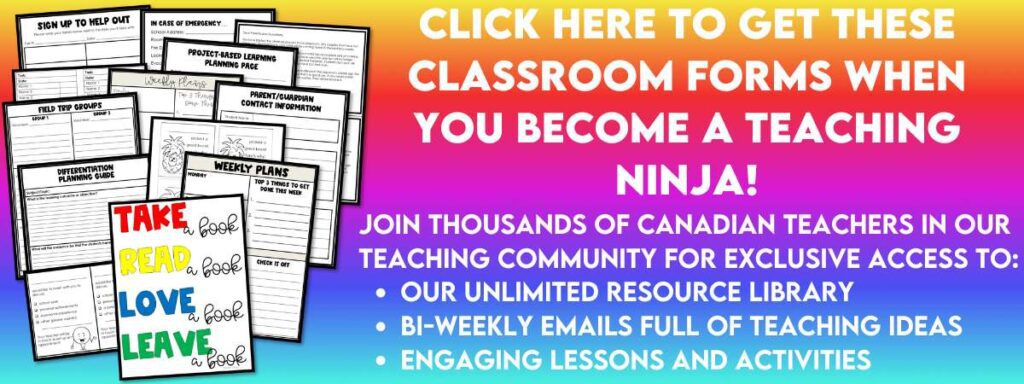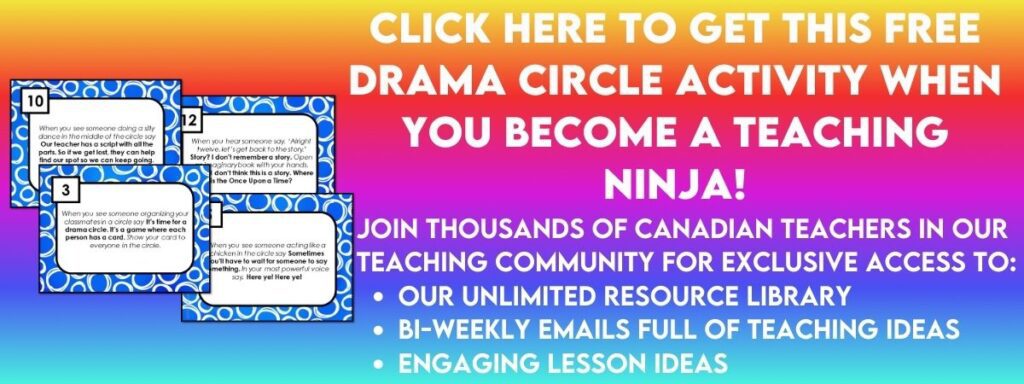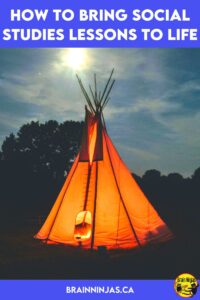
If you’ve ever had an amazing teacher who brought history to life for you, then you probably enjoyed learning. A great teacher throws away the social studies textbook. He or she allows students to explore history in real and relevant ways. This teaches about the past, but also how to learn and think critically about the future.
We love teaching social studies, but honestly, we very rarely teach it using the textbook. For one thing, textbooks provide a pretty condensed and cleansed version of the past. The reading level is way above our students’ comprehension skills. We use textbooks as reference materials only.
That means we need to have a way to bring social studies lessons alive for our students.
Give Your Students the Choice in Projects
What happens when you let your students come up with the task? You get a great activity that students have already bought into because they think it’s their idea!
We were teaching social studies to our fourth and fifth graders one day. The lesson was about the way of life for the different Indigenous groups historically in Canada. Our question to our students was, “How can you show us what you have learned?”
Project-Based Learning in Social Studies
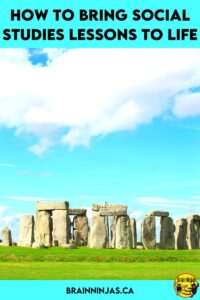
“Can we make a project? How can we build a tipi? Can I make a poster?” The students were so excited.
Of course, we did it all. Our students came up with the idea of turning our classroom into a museum (or they thought they did). Each small group was designated a different Indigenous group and was responsible for creating a museum display to teach the rest of the class about the types and purposes of shelters used.
What they didn’t know, is we had already created a product so other teachers could join in on the fun. It includes background information for the teacher, rubrics, checklists and an outline to do the whole lesson. Find the Design an Indigenous Shelter project in our TpT Store ($USD) or BN Shop ($CAN).
Our students amazed us with their creativity in how they presented their material. We had all sorts of written reports, posters and dioramas.
This project is not just about making something. It includes a short mapping task so students can show where Indigenous People historically lived and includes a checklist so students will know which information they should include. They have to create an exhibit that educates others.
Involve Other Classes
The best part was setting up our classroom as a museum and letting other classes come visit while we taught everything we had learned. They were so engaged and can’t wait to do more projects like it.
We have done other projects similar to this with different grade levels. The grade five curriculum requires us to teach about the Canadian fur trade. Find Design a Fur Trading Post in our TpT Store ($USD) or BN Shop ($CAN). The grade four curriculum is all about colonizing the prairies. Find Design a Prairie Homestead in our TpT Store ($USD) or BN Shop ($CAN).
These types of activities use Project-Based Learning. If you’re not familiar with the concept, it’s the process of giving students a project where they will learn all the concepts as they work on the project. This is different than traditional projects that are done at the end of the unit or lesson. To learn more about this, you should read our post The Reasons for Project-Based Learning. A free project-based learning checklist can be found in our Resource Library, along with many other general classroom forms to help you organize your classroom. Or, we can send a copy directly to your inbox when you sign up for our email list.
Act Out Social Studies Lessons
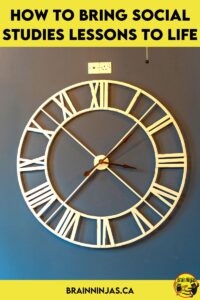
Role-playing is a great way for students to experience history. When planning role-playing lessons, it’s important to think about how students will interpret the information. While it’s great to make lessons engaging, being sensitive to cultural events is important.
Some events in history do not lend themselves well to fun and games. When we teach about historic events like the Holocaust, war, slavery, or oppression of cultural groups, we aim to be accurate and honest. Some of these events are scary for children, but if they are asking questions, it is important to answer them as honestly as possible.
Students should never be put in a position where they are recreating the roles of oppressors or those who have been oppressed. Do not just wing it and hope for the best.
We use drama circles to act out historical events and information in a more controlled way. By using these mini-scripts students can explore the concepts dramatically while still having control over the speech and actions that are taken. We can also control the pace of the lesson.
Want to learn about drama circles? We wrote a whole drama circle about how to do a drama circle. We’ll send it to you for free when you join our email list. If you’re already on our list, you can find a copy in the Resource Library.
Here are some of the topics where we use drama circles:
Indigenous People in Canada: Turtle Island This circle explores how colonization impacted Indigenous People. It touches on Residential Schools and some of the ways the rights of the Indigenous People were taken from them. Find Turtle Island in our TpT Store ($USD) or BN Shop ($CAN).
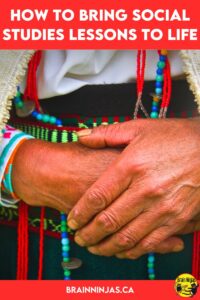
War of 1812: This circle looks at how different groups of Canadians came together to protect British North America. Find the War of 1812 Drama Circle in our TpT Store ($USD) or BN Shop ($CAN).
Remembrance Day Drama Circle: This circle talks about the sacrifices of men and women throughout history to protect Canada and its people. Find the Remembrance Day Drama Circle in our TpT Store ($USD) or BN Shop ($CAN).
Homestead Life: This drama circle talks about how life was difficult for the pioneers who left their home countries to colonize the Canadian prairies. It discusses the fate of Indigenous People who lived on the prairies for centuries prior to the arrival of the colonists. Find Homestead Life Drama Circle in our TpT Store ($USD) or BN Shop ($CAN).
United Empire Loyalists: How did they get to Canada? Why did they come? Learn about this group of Americans who were British and became Canadians. Find the United Empire Loyalists Drama Circle in our TpT Store ($USD) or BN Shop ($CAN).
The Famous Five: These women fought for the rights of women during the suffrage movement. Find the Famous Five Drama Circle in our TpT Store ($USD) or BN Shop ($CAN).
If you are looking for more information about how to incorporate drama into your classroom, you may want to read some of our other posts: Ways to Teach Drama in the Classroom and Add Some Drama to Your Classroom.
Historical Bias
We also speak about bias. One of the quotes we use regularly is Sir Winston Churchill’s “History is written by the victors.” We talk about how different people have different perspectives on the same events.
One way we talk about bias is to do an activity on multiple perspectives. A regular issue in the news right now is whether or not pipelines should be built. It’s part of a much larger issue around the use of fossil fuels, but we managed to break it down a little bit so our students could learn how to use many perspectives to create their own opinions. Find the Multiple Perspectives: Pipeline Perspective in our TpT Store ($USD) or BN Shop ($CAN).
We also have a version about space exploration. Should countries be spending money sending people into space right now? Find the Multiple Perspectives: Space Exploration in our TpT Store ($USD) or BN Shop ($CAN).
Every Person Matters
We try very hard to make sure we include every culture we can in our historical learning with students. Canada is a mosaic of cultures and it is this combined identity that makes us stronger. We are woven together and all contribute to the Canada we know today. It is not perfect, but the only way forward is to work together while talking about injustices from the past.
Unfortunately, most textbooks wash over the lesser-known cultural stories that are part of the bigger events. These are the people we seek out and help our students learn about. This is partly because our students can identify with these different cultural groups and partly because these unsung historical heroes are why Canada is so unique.
Diversity
The Canadian Puzzle looks at the different groups of people who were living in Canada prior to Confederation. While it doesn’t go into great detail, it does talk about the different contributions each of the groups of people has made to our lives today as Canadians. The groups discussed are Indigenous Peoples, French explorers, English fur traders, the United Empire Loyalists, the Acadians, the Métis, the Vikings and Missionaries. Find Canada Prior to Confederation in our TpT Store ($USD) or BN Shop ($CAN).
Immigration
Immigration to Canada After Confederation examines the different people who came to Canada (and the different ways they got here) during the Third Wave. The different immigrants share their stories about how they came to Canada. Students will create timelines. It finishes with their time at Grosse Île (Canada’s first quarantine station) where students will use comprehension skills. Find Immigration to Canada After Confederation in our TpT Store ($USD) or BN Shop ($CAN).
War
Canadians in War: How War Changes Us. This resource features four different types of writing formats to teach about four very different people and their experiences during wars in which Canada has been involved. One is a story about a woman who wants to be a pilot during World War Two. Another is the diary entries of a Sikh Canadian serving on the front. The classified files of how Chinese Canadians served as spies during the war are included along with articles about a Ukrainian internment camp, Indigenous People who served in the War of 1812 and a letter from a son to his father serving at the front. Find Canadians In War: How War Changes Us in our TpT Store ($USD) or BN Shop ($CAN). We have used this resource for Remembrance Day or during our 20th-century lessons.
Find the Voices
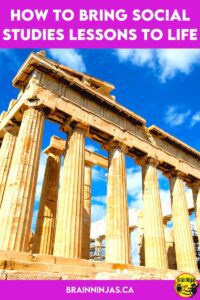
We have far fewer veterans from the world wars available to speak as we used to, but thanks to organizations that worked to record and preserve their stories, we still have access to many of them.
Some of our favourite resources for Canadian history are found online.
The Memory Project: This has recordings from veterans, resources for teachers and ways to connect with our servicemen and women. We strongly recommend you preview what you plan to share with students (sometimes for graphic content and sometimes to trim and share relevant parts).
Canada’s History for Kids: This is a kid-friendly website with lots of resources designed for kids. We use this website to explore different topics in the Kayak section. It’s full of comics about Canadian historical events and you can sign up or subscribe to the magazine.
CBC’s The Story of Us: This documentary series is recommended for Grade 5+ (though if you prescreen it you can pause and skip the more graphic parts) and goes through various aspects of our history. It is a fairly long series so you may want to pick and choose the parts that are relevant to the topics you’re covering at the time.
Another interesting documentary series is The World Without Canada. Unfortunately, we couldn’t find a way to stream/buy/rent this in Canada at the time of writing this post, but we will keep looking for it. We did come across a few random episodes on YouTube, but they weren’t posted by the content creator and we didn’t feel it was appropriate to link to a copyright violation.
Connect to Other Subject Areas
When history connects to our lives in different ways, it makes more meaning for us.
One of the ways we connect is through art. It allows students to be creative and express their learning. We wrote a whole post about Connecting Social Studies to Art which is worth a read and has some art projects that you can do with your class.
How do you bring social studies lessons alive for your students? We’d love to hear about it. Leave us a comment below.

